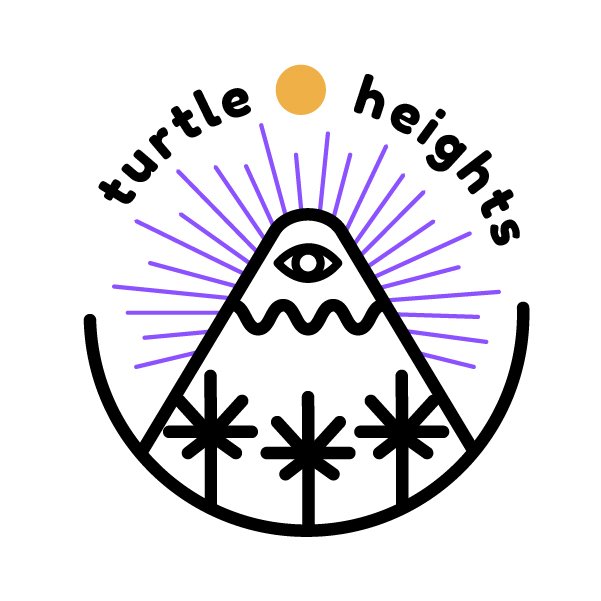How to get your products into retail shops
Partnering with retail shops is a great way to showcase your products in person and to a larger audience. Plus you get local presence which is pretty awesome!
How to find retail shops
The easiest way to find retail shops is to use Google maps search, social media, and checking out shops in your area while you’re out.
In the beginning, I didn’t know where to start so I began by using Google maps. I searched for specific key words like gift shops, local artist shops, art shops, smoke shops, etc. I also looked at specific neighborhoods at a time because the long list of results can be a lot! I literally scanned through all the shops in the results, and I selected the ones that would be a good fit by checking out their website, photos, reviews, and their Instagram page.
Another great way to find shops is using social media! I mainly use Instagram, and I began to see local shops show up in my feed sometimes. I’d also keep an eye out for any other fellow artists/makers that posted about local shops they were working with. Whenever I saw a good one, I saved it or took a screenshot so I could come back to it later to do my research.
Lastly, whenever you’re out and you see a cool shop that you think your products would be a good fit for, take a note and reach out. One of the first shops I partnered with is located in Yellow Springs, OH. My husband’s family used to live there, and we loved checking out the little town & shops whenever we visited. Urban Handmade was the shop we would never miss. They carry great products from local artists & makers, so I was eager to reach out and partner with them. They loved my products, and I’ve been working with them ever since!
Selling on Wholesale vs Consignment
Once you get in touch with a shop, they’ll share their buying terms. Each shop operates on their own terms and most of them will be either Wholesale or Consignment.
With Wholesale:
You sell your products for 50% of the retail price up front.
For example, if you’re selling postcards for $3 (MSRP), then your Wholesale price (WSP) is $1.50.You’ll need to create a Wholesale Guide.
Most shops will ask to see a catalog or line sheet which is pretty much the same thing. If you don’t have a separate Wholesale shop on your website, you’ll need to create a Wholesale Guide. Include your contact information, clean product pictures, quantity or order minimums, WSP & MSRP, product details like size/color/materials, packaging details, and your order & shipping terms. If you’d like to see our Wholesale Guide, drop me a note!You don’t charge sales tax.
Since the buyer is purchasing your goods for resale, you don’t charge sales tax. You’re required to collect a valid exemption or resale certificate from buyers to validate each exempt transaction.Payments are usually done with a check. If you create a steady relationship with your buyer, some will request a payment term of NET10, 15, or 30 which means they will pay you after 10/15/40 days of receiving your products.
Buyer covers shipping.
Most buyers will pay for shipping unless you agree to split the cost.
With Consignment:
It’s more of a partnership with the shop.
You’re getting the help of the shop to display & sell your products in their storefront without you having to do any of the shop operation. Most shops will send you a contract with terms specific to their business.You get a portion of the sales on a bi-weekly or monthly basis.
You provide the products up front and get a portion of the sales afterwards. Terms vary by shop, but generally, the split is 60/40 (60 being you) but I’ve come across shops that do 70/30, 65/35, and even 50/50 which I don’t recommend. Some places take space rent and/or an additional buyer’s fee per units sold.You get to decide which products to sell.
Most shops will ask you for a list of products. There are some shops that prefer to choose the products. When this happens, the Wholesale Guide comes in handy.Shipping cost depends on the shop.
Most shops will work with you and pay for shipping, but some shops specify in their contract that they don’t pay for shipping. Talk through the specifics with your shop.
How to outreach & results
To start, I set a goal each week to reach out to 15-20 shops. I created a spreadsheet to keep track of the shops and stay on top of the outreaches I was doing. I begin with an email briefly introducing myself, include any links, and why I want to work with them. If I don’t hear back in a week or so, I send a follow up.
Most shops get a ton of similar requests, so an extra follow up email helps when you don’t hear back. In my experience, 49% of the shops didn’t respond at all and 7% of shops said they’d keep me in mind for future openings. Don’t get discouraged! Read this blog post to see why because sometimes a shop you spoke with months ago will remember you and reach out with a opening.
So far, I’ve successfully partnered with 5% of my outreaches. Check out the list of shops I’m working with and find Turtle Heights IRL!
Thank you so much for reading! I hope this was helpful ☻ If you have any questions, feel free to drop me a note! Don’t forget to:
🐢 Follow us on Instagram @turtleheights
🛒 Visit our website www.turtleheights.com
👄 Spread the word. Like & share our posts with your friends & fellow artists!


